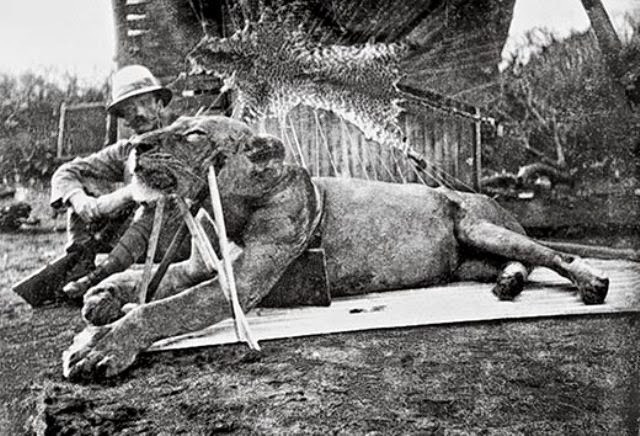In March 1898 the British started building a railway bridge over the Tsavo River in Kenya. During the next nine months of construction, two male lions stalked the campsite, dragging Indian workers from their tents at night and devouring them. Workers tried to scare off the lions and built campfires and fences but their efforts were futile.
Hundreds of workers fled from Tsavo, halting construction on the bridge. Project manager John Henry Patterson shot the first lion on December 9, 1898. Twenty days later, the second lion was found and killed. It took eight men to carry the carcass back to camp. Construction workers returned and finished the bridge in February 1899. Patterson claimed that 135 workers had been killed.
After 25 years as Patterson's floor rugs, the lions' skins were sold to the Chicago Field Museum. The lions were then reconstructed and are now on permanent display along with the original skulls.



 Descargar Google Chrome
Descargar Google Chrome Descargar Mozilla Firefox
Descargar Mozilla Firefox Descargar Opera
Descargar Opera